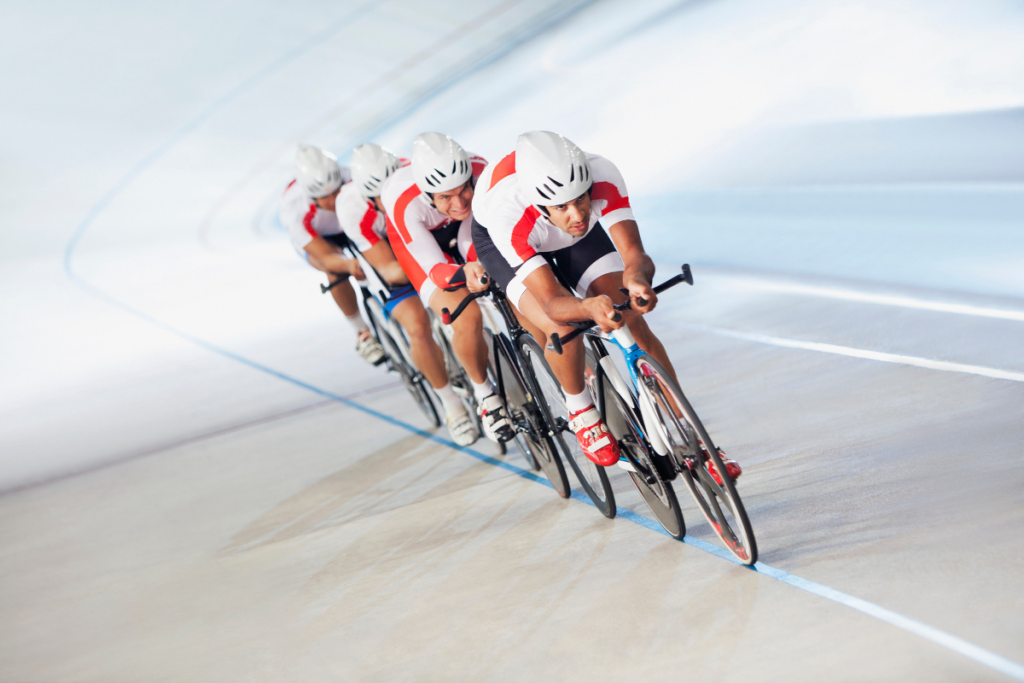Coaches lose a lot of time in querying, combining and analyzing the large amount of wearables & video data of their athletes. Furthermore, real-time access to this data is mostly not possible, limiting its use during training (when it is most valuable).
In collaboration with Cycling Vlaanderen and IDLab the team of prof. dr. Steven Verstockt (Jelle De Bock & Lore Simons) of Ghent University is going for the solution by making a dashboard to support coaches of track cyclists in analyzing and visualizing real-time sensor data: the Wireless Cycling Network!
What’s the plan with the Wireless Cycling Network?
The goal is to support coaches in the monitoring/analysis of their riders using a central sensor dashboard on which the ANT+ sensor data (power, cadence, HR, etc) of all riders is visualized and events/outliers can be shown. The goal is to use off-the-shelf hardware and build software on top of it.
The project will proceed in 4 steps.
1. Investigation on capturing ANT+ sensor data
Initially, an investigation will be done on how ant+ sensor data can be captured in an efficient and user-friendly way on the center square of a track using a mobile set-up (which can be easily moved). For this purpose, an evaluation of type/placement/number of antennas/loggers will be performed, starting from existing hardware. The signal strength/range of different types of data capturing sensors will also be studied (ANT+ multiscan).
2. Investigation on rider’s location on the track
So the question is whether there is an inexpensive and time-efficient way to monitor jump loads that is validated in terms of method, and where Based on sensor insights (correlations between sensor data and position on the track) and available location data, a rough estimate of the riders’ location on the track will be made. Exploratory literature review has shown that this is still a very challenging problem.
3. Data visualization
In order not to overload the coaches with data, an extra layer is placed on top of the raw data that is able to detect outliers and events and allow them to filter, color and sort the data accordingly. In this way the attention of the coaches is focused on what really matters.
4. Quality assessment
A quality assessment module will also be added. In consultation with the coaches the important features in their assessment process will be analyzed. The building blocks for this will be developed as generically as possible so that they can also be used for other events where (combined) data can help to give an opinion on the quality of a technical performance (e.g. evaluation ‘driving the correct lines’ and ‘standing start’).
What is the state of affairs right now and what are the next steps?
Currently the hardware – software link has been thoroughly tried and tested. Hardware requirements are well defined and the setup of the hardware on the track can be considered as a fluent process. There is now a profound understanding of the capabilities and inabilities of the hardware and sensors.
Furthermore a first version of the athlete sensor data dashboard and the configuration of the athlete physiological parameters is implemented. Data is successfully stored to a database that makes storing the recorded sensor data a very convenient process. When a power meter is attached to an athlete’s sensor data configuration the dashboard also shows energy levels of the athlete with the basic version of the Skiba W’ energy model (1).
The next steps in the development process is the gathering of feedback from the people that will actually use the platform and further improve look and feel based on their input. Additionally we also plan to put the location algorithms that have been tested based on the recorded track training sessions in the platform’s front- and back-end.
Jelle De Bock
_____________________________________________________________________
Summary of the advantages of the Wireless Cycling Network:
- Improved data collection: ANT+ sensor data will be collected in an efficient and user-friendly manner.
- Better athlete guidance: Coaches will be supported in the real-time monitoring/analysis of their riders.
- Generic solution: The hardware set-up and dashboard could be used for other sports too (with minor modification).
____________________________________________________________________
Take a look at the infographic or go to the project and download it yourself!
Key publication: Michael Steyaert, Jelle De Bock, and Steven Verstockt (2021), Sensor-Based Performance Monitoring in Track Cycling. 8th Workshop on Machine Learning and Data Mining for Sports Analytics
(1) Skiba PF, Jackman S, Clarke D, Vanhatalo A, Jones AM. Effect of work and recovery durations on W’ reconstitution during intermittent exercise. Medicine and Science in Sports and Exercise. 2014 Jul;46(7):1433-1440. DOI: 10.1249/mss.0000000000000226. PMID: 24492634.

- Are you interested in the Wireless Cycling Network and want to know more about it or about the people behind it? Do not hesitate to contact Prof. dr. Steven Verstockt or Kristof De Mey.
For all your general questions, contact us through our website!





